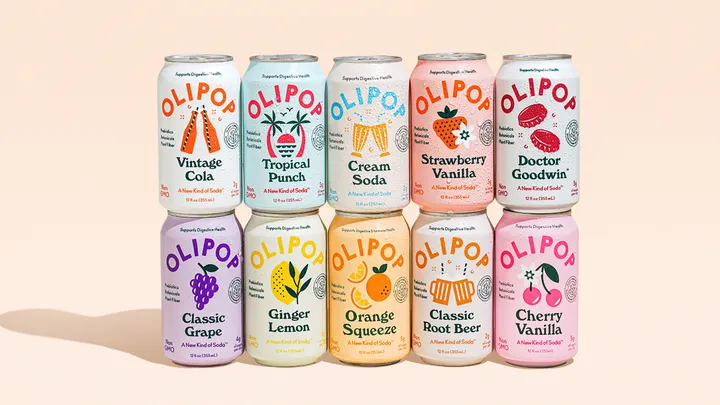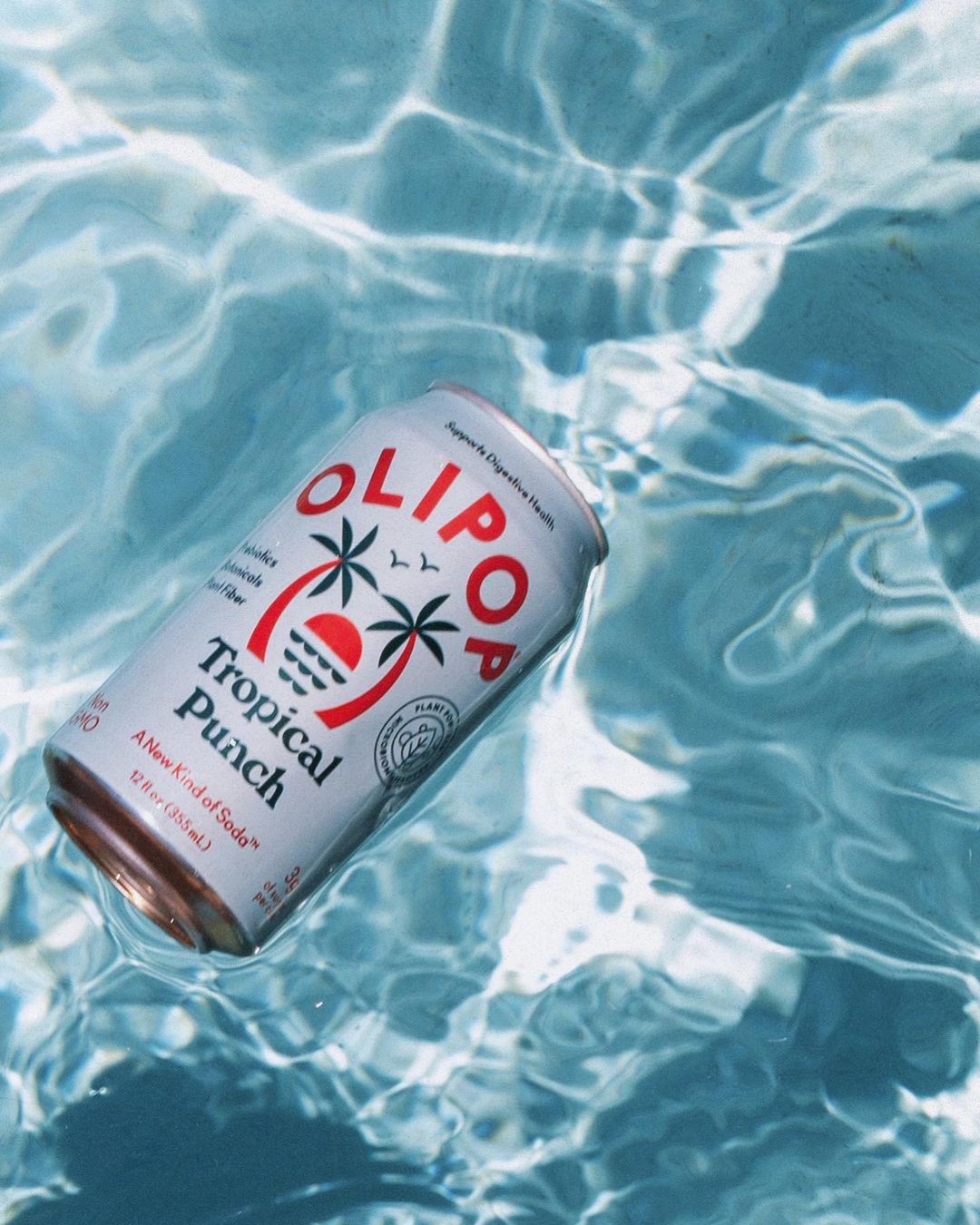A core tenet of free markets is competition. Allowing—and more importantly, incentivizing—players to compete will often, albeit not always, bring forth all sorts of innovations to market that enhance consumers’ lives by way of new choices, better quality, and increasingly, brands with values and missions that align with their own.
Sometimes, due to a variety of factors–being first-to-market, holding a patent or formula, or having significant brand equity after years of brand-building efforts–incumbents manage to hold their ground, keeping new players at bay. And then sometimes, something beautiful happens: a window of opportunity opens, and an emerging brand seizes it.
The soda category in food & beverage is a great example of a market “ripe for disruption.” For decades, a few key players have dominated it, offering nearly identical products. Coca-Cola and Pepsi, for instance, have adapted in various ways over the years to stay relevant. For example, in 2005, Coca-Cola responded to growing consumer demand for zero-calorie options with Coke Zero, marking its most significant new product in 22 years. Coke Zero allowed Coca-Cola to adapt to changing consumer preferences while keeping disruptors at bay—but how much longer can it hold that edge?
Enter OLIPOP. Destination: your fridge.
Olipop, founded in 2018 by Ben Goodwin and David Lester, set out to make a soda that supports gut health. Their creation, a prebiotic soda made from botanical extracts, plant fibers, and natural sweeteners, mimics the flavors people grew up with but without the high sugar and artificial ingredients that have long defined the category.
Their bet that consumers were ready for a healthier soda has paid off. Olipop reached $200 million in revenue in 2023—a 185% increase from 2022. The forecast for 2024 is $500 million. The product is now available in over 35,000 U.S. stores, including Walmart, Target, Whole Foods, Publix, Kroger, and Costco.
I will admit labeling Olipop as disruptive is provocative. But I think the term fits. Olipop’s exponential growth stems from great product-market fit and impressive brand orchestration and implementation, both of which we’ll explore further below.

Positioning, positioning, positioning
Olipop’s original positioning was as a prebiotic seltzer with the tagline “A Sparkling Tonic.” While this initial positioning may have felt limiting, it likely served them well by focusing the message on a target segment concerned with gut health, helping them secure an early customer base. Then at some point between 2021 and 2022, they repositioned and changed the tagline to “A New Kind of Soda” a brilliant move for their next growth phase. This new positioning brings expanded market opportunities, redefining soda as a healthy option, and appealing to current soda consumers (intenders), as well as non-consumers (rejectors).
Olipop taps into what’s known as newstalgia with flavors that evoke traditional soda experiences while promoting wellness. This concept is particularly appealing to Gen Z, who increasingly seem to value retro-inspired products. The brand originally launched with two flavors, Strawberry Vanilla and Ginger Lemon. They have since added 16 additional flavors, catering to various taste preferences.
As a product, Olipop addresses a significant, unmet consumer need in the space, and it’s happening just at the right moment, as everyone becomes increasingly more health-conscious. But the brand, especially via social media, is the player to watch here. Olipop has done an excellent job leveraging social media for brand-building. It dominates TikTok as a platform–a must for most consumer brands today–works with creators, taps into cultural moments, and has found its mojo. In other words, it has tested, learned, finessed, and mastered its own social voice, and it has a pretty good understanding of how the brand needs to show up on social. This allows them to move quickly, at the speed of culture as we like to say. And this only happens when brands commit to a social strategy for long enough, until it becomes second nature to everyone in the team when they think “social.”
@drinkolipop Reply to @meghan_eb serious video alert🚨 so much love for our olifam ❤️ #sodaalternative #healthysoda #guthealth #olipop #drinkolipop ♬ as it was bridge is a BANGER – han
So how did they do it? Olipop essentially handed its TikTok over to creators. First it was creator Sara Crane, and now creator Diana Rondi who is the face of the brand on social. Their content is fun, engaging, and highly relevant to their TikTok audience. It is raw, unfiltered, and culturally tuned–the single best way for a brand to stand out on social.
@drinkolipop *closes laptop until monday* #drinkolipop #olipop #prebioticsoda #genz #worklife #fridayvibes ♬ original sound – baby hilton
Their Instagram is equally impressive. Olipop strikes a perfect balance between brand-led and social-first content, blending it with cultural trends when appropriate. Their Instagram feed might be one of the best visual examples of brand-building on social I’ve seen in a while.
Getting social media right in 2024 is challenging, and many brands feel as though they have to compromise their brand to succeed on this channel. But Olipop is showing you can, in fact, have it all.
Olipop is literally in the comments section and taking notes. Founders often mention how they listen to what their customers are saying and react to it–whether it means new flavor ideas, or, in the case of this post above, a shelf-stable version of their product, as well as a lower fiber option. Often forgotten, even by some of the largest brands, social is arguably one of the best sources of consumer intelligence.
When brands think about making an announcement on social, they don’t usually picture a simple, minimally edited photo taken in a supermarket, with a creator holding a sign and dressed as the product itself. Yet generally speaking, this is exactly the kind of content that resonates on social today.
The best results on social are obtained when brands integrate it into a larger brand effort—precisely what Olipop is doing. Beyond an excellent social media strategy, Olipop’s brand orchestration–including partnerships and sponsorships–is enabling its exponential growth. A cohesive experience, consistent across multiple touchpoints. Its brand positioning, continuously reinforced via social content, partnerships, sponsorships, and experiential activations. Olipop is hitting the brand gym hard, getting the reps in, nearly every day. And it’s paying off, big time.
This is a superb example of brand building at a time when competition for attention has never been fiercer. I look forward to seeing the brand continue to grow in its home market and expand globally, and wouldn’t rule out an acquisition by a larger player. Cheers!

